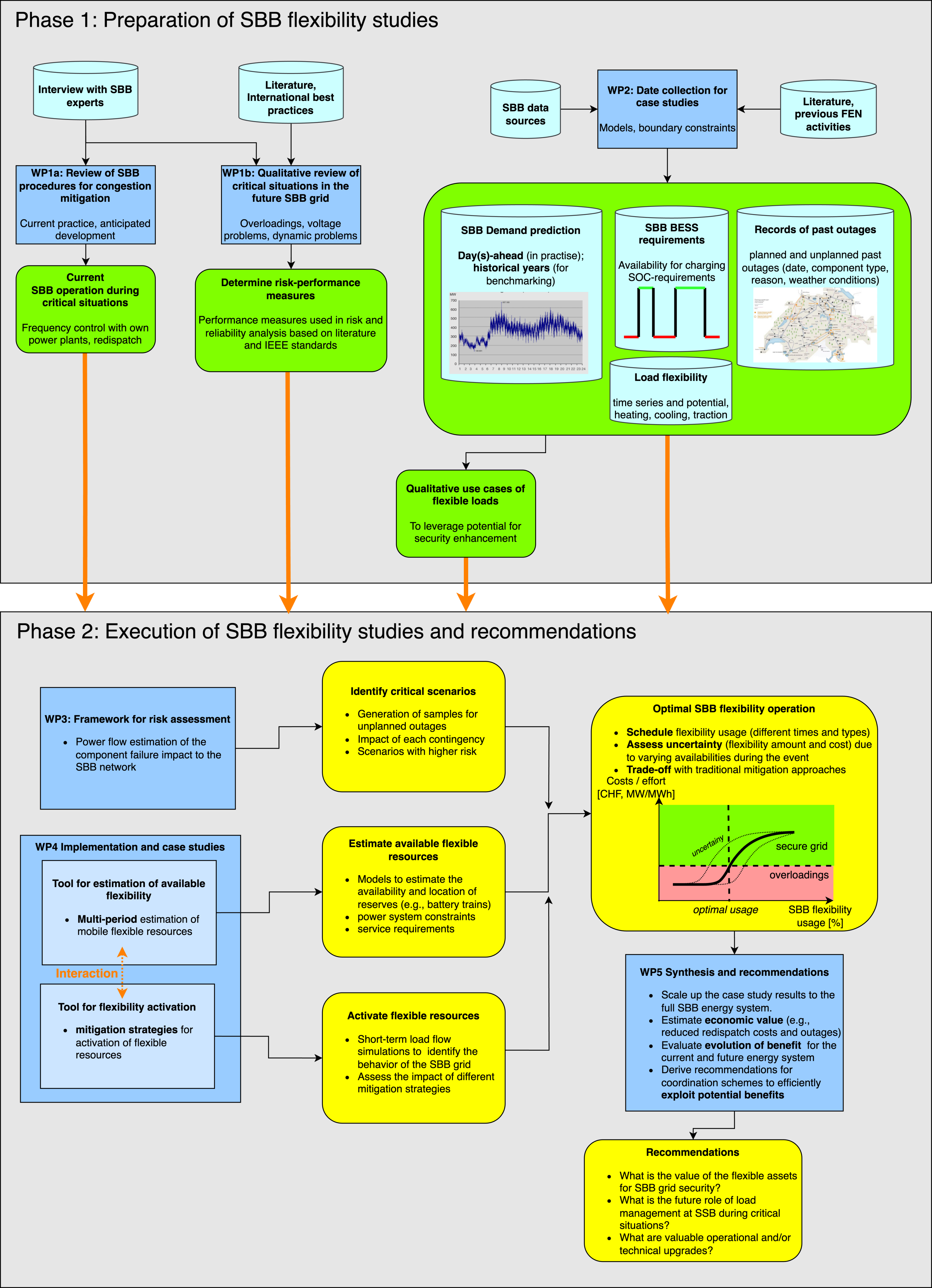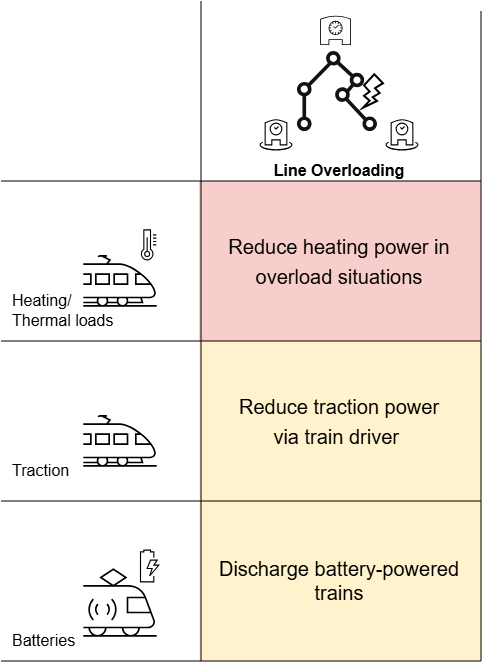FLEXCON
Optimal and flexible operation of EV charging hubs
Partners: ETHZ (FEN), SBB
Duration: 10/2025 - 09/2027
Funding: ETH Center for Sustainable Future Mobility (CSFM) - Future Mobility Research Program
Project Leader: ETHZ
Project Team: Dr. Alexander Fuchs, Dr. Nikolaos Savvopoulos, Dr. Turhan Demiray
- Identify power grid challenges in railway networks arising from increased and volatile energy demand, maintenance activities, and renewable energy integration.
- Explore demand-side flexibility options to manage future grid congestion in the railway power system.
- Leverage flexibility from mobile battery-equipped trains by absorbing or injecting energy when and where needed.
In the context of global climate challenges, energy efficiency has become a critical pillar for sustainable development across all sectors. The electrification of various sectors serves not only to decrease dependency on fossil fuels but also to leverage advancements in technology for more sustainable energy consumption. The Swiss Federal Railways (SBB) as one of the largest energy consumers is driving this transition in Switzerland, playing a multifaceted role as a consumer, generator, and power system operator of the 16.7Hz railway power network. This multifaceted role demands innovative solutions tailored to the specific needs and operational realities of railway systems.
The integration of renewable energy sources, combined with increased electricity demand, is pushing power systems to operate closer to their operating limits, such as thermal and voltage bounds. For SBB's railway system, this challenge is driven by an increase in traffic volume, planned outages due to maintenance and the deployment of more powerful trains. This project aims to create a systematic framework to identify the best mitigation approaches for SBB grid overloadings, with the goal of promoting a more efficient and secure railway power system.
To enhance the operational efficiency and security of the railway power system, the project leverages all available flexibility options, including regenerative braking, adjustable heating/cooling in trains, and battery-powered trains. By optimizing these elements and implementing decentralized automatic flexibility measures, the proposed approach can serve as a model for both national and international railway systems. This complements the two other energy system challenges at SBB, namely frequency control and seasonal security of supply, for which established management solutions exist. The project outcome lays the foundation for systematic exploration of new resilience measures in the course of the energy transition at SBB.
While there is extensive research on power system operational planning for smart grids—which has significantly contributed to reducing energy consumption and lowering electricity bills—focused studies on railway power systems are scarce. The smart grid paradigm opens numerous opportunities for enhanced energy management, yet its application in the railway sector remains underexploited. This project proposes to bridge the gap between innovative power system practices and the unique demands of railway power systems. By adapting strategies successful in smart grid applications to the 16.7Hz railway network, the project aims to uncover operational practices that could further enhance efficiency and reliability. Exploring these synergies and identifying critical differences will provide a pathway to pioneering new operational practices tailored for the railway sector.
Specifically, the integration of the available flexibility of future battery trains introduces a challenge and unique opportunity over traditional power systems operational practices. Unlike static resources in power systems, these battery-powered trains can be dynamically moved across the network considering the railway infrastructure service schedule and the forecasted flexibility needs. This capability offers a unique form of flexibility in energy management since these resources can be relocated and dispatched to areas where they are most needed. On the one hand, this extends traditional smart grid research that focuses on fixed installations of flexible resources. On the other hand, the integration of the electricity grid and battery trains by one company (SBB) gives the unique opportunity to consider and test advanced concepts of bidirectional EV-charging management, that yield a high advantage in grid congestion management through a close coordination of all resources.
1) Review of SBB procedures for congestion mitigation and critical situations in the future SBB grid
a. Ιdentification of boundary constraints through interviews. Identification of today’s processes available during critical situations (e.g., frequency control and redispatch).
b. Identification of critical situations in the future SBB grid (local or system wide), including realistic examples, the associated probability and a risk-based ranking.
2) Qualitative assessment of how and where controlled loads can mitigate critical situations, on top of the existing measures.
3) Risk-assessment framework for grid analyses and identification of critical scenarios
4) Selection, definition and execution of quantitative case studies of the most relevant examples. This includes load flow simulations of critical snapshots of the SBB grid, including the optimization-based modeling of the flexibility assets.
5) Synthesis and recommendations (for operational and/or technical upgrades) for the future role of load management at SBB for critical situations.

